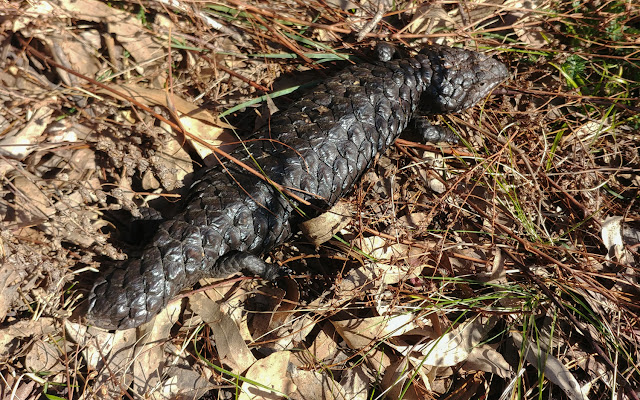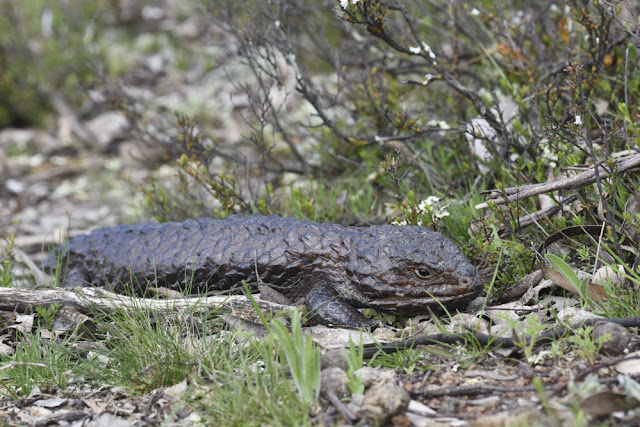A Helping Hand
I met two Shingleback lizards Trachydosaurus rugosus yesterday while out in the bush. They were eating the flowers of conola plants, but they could only reach the lowest flowers. So, I picked some of the tallest flowers and gave them to the Shinglebacks. They were very grateful and ate them up quickly. They are mostly vegetarian, well, they are very slow moving animals.
Its nice to give a helping hand when I can.















.jpg)
.jpg)
.jpg)
.jpg)
.jpg)





